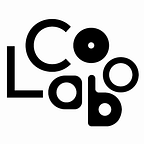Join CoLabo to create innovative tools for biomedical research & education
By Andrés Colubri —
Hello, Andrés Colubri here! First, an announcement: the Colubri Laboratory (or CoLabo for short) in the program of Bioinformatics and Integrative Biology at the University of Massachusetts Medical School, is looking to hire three staff positions in software engineering, mobile app development, and UX/information design. The overall goal is to put together a core team of motivated individuals to work in the design and development of a portfolio of software tools integrating research, education, and community outreach.
This is an exciting time for CoLabo, which was launched only a few months ago with an immediate focus on infectious disease research. So, in this brief post, I’d like to give some background about the lab, and the need for these positions. Since I’m CoLabo’s Principal Investigator, the lab’s “identity” at this early stage draws quite a lot from my background in science, art, and code. Starting from my undergraduate and doctoral studies in physics and mathematics at the Universidad Nacional del Sur in Bahía Blanca, Argentina, where I graduated back in 2002, I followed a somewhat eclectic career that took me from protein folding prediction to media arts and now infectious disease research. You can see this career arc summarized below:
A common thread through my path across disciplines is the use of computational approaches in diverse contexts, including molecular biology, interactive arts, genomic data visualization, and machine learning for biomedical applications. The opportunity to explore computer-based art & design through my own work and as a long-time contributor to the Processing project, allowed me to return to academic research with a strong motivation to incorporate information and user-centered design, outreach through formal and informal educational initiatives, and multi-disciplinary collaboration.
The three positions we are looking to fill in at this moment would work together across different projects where tool design, development, and deployment need to be executed nimbly and taking into account various user’s needs. The first such project is Operation Outbreak, an app-based platform to simulate infectious disease outbreaks for STEM education and epidemiological modeling applications. This project started as an experiential learning activity complementing a civics class taught at a middle school in Florida back in 2015, and has been growing in scope and technical complexity since then.
The platform now comprises a fully-featured, native mobile app for iOS and Android that uses Bluetooth to simulate transmission of a virtual pathogen and Firebase for push notifications, a backend SQL database and serverless API running on AWS that store and manage the parameters and simulation data, a React web admin tool that allows teachers and other event organizers to create their own custom simulations, and an interactive online dashboard to visualize and understand the simulated outbreaks. All these components are shown in the following diagram:
Even though great progress was made during the past year with the development of the Operation Outbreak platform, thanks to the generous support from the Gordon and Betty Moore Foundation and other donors, much more work remains to be done as we plan to scale the platform for use in many schools around the country and even around the world. This commentary piece published recently in the journal Cell gives an overview of the history and future plans for Operation Outbreak. Among those plans:
- Add new functionality to the app such as offline activities, “social distancing” scorecards, and new avatar designs in order to increase engagement.
- Implement a “visual pathogen creator” in the admin tool, so users who are not epidemiology experts can still configure their own custom simulations.
- Construct new epidemiological models that can be used to parametrize simulations and potentially be applied to describe real-life outbreaks.
- Add a virtual genome to the pathogens in the app, so they can mutate and “evolve” by changing parameters such as infectivity and virulence. The synthetic sequencing data could then be used to test phylogenetic tree reconstruction methods.
Realizing these plans will require outbreak modelers, genetic epidemiologists, software engineers, app developers, UX designers, and other collaborators working closely together in the lab. I think Operation Outbreak is a good example of a multidisciplinary project that has important applications in STEM education and epidemiological modeling. I expect that future projects at CoLabo (ranging from visualization of gene expression data to mobile apps for disease diagnosis and prognosis) will continue to features these characteristics and will make the lab an exciting place for people to work on impactful research and outreach projects.
